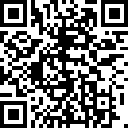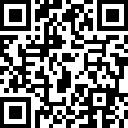What is Margin?
Margin is the amount of money you must deposit with your broker to open and maintain a leveraged trading position. It acts as a form of collateral, ensuring that you can cover potential losses. Without margin, trading with leverage would not be possible.
How Does Margin Work?
When trading on margin, your broker sets aside a portion of your funds as the required margin. The amount of margin required depends on the size of your position (position size) and the margin requirement set by the broker, which is expressed as a percentage.
Formula for Margin:
Margin = Position Size × Margin Requirement
Example: If you want to open a $100,000 position in a currency pair with a margin requirement of 2%, the calculation is:
Margin = 100,000 × 0.02 = 2,000
In this case, you need to deposit $2,000 to control a $100,000 position. The remaining $98,000 is provided by your broker as part of the leverage.
What is Used Margin?
Used margin is the total amount of margin that is currently tied up in maintaining your open positions. It is locked by the broker and cannot be used for opening new trades.
How Used Margin Works: Each time you open a position, the required margin for that trade is added to your used margin. As you open more positions, your used margin increases.
Example of Used Margin: If you open two positions:
- A $50,000 position with a 2% margin requirement:
Margin = 50,000 × 0.02 = 1,000
- A $100,000 position with a 1% margin requirement:
Margin = 100,000 × 0.01 = 1,000
The total used margin is $2,000. This amount is reserved by your broker to secure your open positions.
What is Free Margin?
Free margin is the portion of your funds that is not allocated as used margin. It represents the capital available for opening new trades or absorbing potential losses.
Formula for Free Margin:
Free Margin = Equity − Used Margin
Example: If your account equity is $10,000 and your used margin is $2,000:
Free Margin = 10,000 − 2,000 = 8,000
Maintaining a healthy free margin is critical to avoid margin calls, which occur when your equity falls below the required margin level.
What is Leverage?
Leverage is a mechanism that allows traders to control larger positions than their initial deposit by borrowing funds from their broker. It is expressed as a ratio, such as 1:10, 1:50, or 1:100, indicating how much your trading power is magnified.
How Does Leverage Work?
The leverage ratio determines the amount of margin required to open a position. A higher leverage ratio means you can control a larger position with less capital, but it also increases your exposure to risk.
Formula for Leverage:
Leverage Ratio = Position Size / Margin
Example: If you open a $50,000 position with a $1,000 margin deposit:
Leverage Ratio = 50,000 / 1,000 = 50:1
In this scenario, every $1 of your capital controls $50 in the market.
Margin Call and Stop-Out Levels
A margin call occurs when your account equity falls below the required margin level, prompting your broker to request additional funds. If your equity continues to decline and reaches the stop-out level, your broker may close your positions to prevent further losses.
How to Avoid Margin Calls
- Monitor Free Margin: Regularly check your account’s free margin to ensure you have enough funds to sustain your trades.
- Use Stop-Loss Orders: Protect your positions by setting predefined levels at which your trades will be automatically closed.
- Avoid Over-Leveraging: Use appropriate leverage ratios to limit your exposure.
Case Studies: Margin and Leverage in Action
Example 1: A Profitable Trade
Suppose you deposit $5,000 into your account and use 1:50 leverage to open a $100,000 position in EUR/USD. The market moves 1% in your favour.
Profit Calculation:
Profit = Position Size × Price Movement Percentage
Profit = 100,000 × 0.01 = 1,000
You earn a $1,000 profit, a 20% return on your initial deposit.
Example 2: A Loss Due to Over-Leverage
Using the same setup, the market moves against you by 2%.
Loss Calculation:
Loss = 100,000 × 0.02 = 2,000
Your equity falls to $3,000, reducing your free margin and potentially triggering a margin call.
Stop-Loss Orders in Risk Management
A stop-loss order is a critical tool for managing risk in leveraged trading. It automatically closes your position when the market moves against you by a predefined amount, limiting your losses.
Setting an Effective Stop-Loss:
- Percentage-Based Approach: Many traders set a stop-loss at a percentage below the entry price, such as 2% or 5%.
- Technical Levels: Use support and resistance levels to place your stop-loss strategically. For example, set it just below a support level to account for market noise.
- Trailing Stops: Adjust your stop-loss as the trade moves in your favour to lock in profits.
Pro Tip: Avoid setting your stop-loss too close to your entry price, as this may result in premature exits due to normal market fluctuations.
Benefits and Risks of Leverage
Benefits:
- Increased Market Exposure: Control larger positions with minimal capital.
- Maximised Returns: Amplify profits with small price movements.
- Diversification: Allocate capital across multiple assets while maintaining flexibility.
Risks:
- Amplified Losses: Adverse price movements can lead to significant losses.
- Margin Calls: Insufficient free margin may result in a margin call or forced liquidation.
Volatility Risks: High leverage increases the impact of market volatility on your trades.
CFD Trading on Ultima Markets
Ultima Markets is a fully licensed broker and a multi-asset trading platform offering access to 250+ CFD financial instruments, including Forex, Commodities, Indices, and Shares. We guarantee tight spreads and fast execution. Until now, we have served clients from 172 countries and regions with our trustworthy services and well-built trading systems.
Ultima Markets has achieved remarkable recognition in 2024, winning prestigious awards such as the Best Affiliates Brokerage, Best Fund Safety in Global Forex Awards, and the Best APAC CFD broker in Traders Fair 2024 Hong Kong. As the first CFD broker to join the United Nations Global Compact, Ultima Markets underscores its commitment to sustainability and the missions to advance ethical financial services and contribute to a sustainable future.
Ultima Markets is a member of The Financial Commission, an international independent body responsible for resolving disputes in the Forex and CFD markets.
All clients of Ultima Markets are protected under insurance coverage provided by Willis Towers Watson (WTW), a global insurance brokerage established in 1828, with claims eligibility up to US$1,000,000 per account.







![[MetaTrader 5 Mobile Trading Complete Guide] 7 Key Advantages for Real-Time Market Access](https://www.ultimamarkets.com/wp-content/uploads/2025/04/mt5_mobile_trading_card.jpg)
















